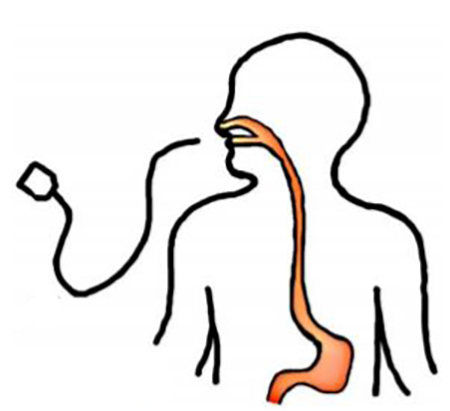Patient EducationJul | 13 | 2020
All About Your Esophageal Manometry Test
What is an esophageal manometry test?
An esophageal manometry test, or Esmo, is a test that helps us understand how well the muscles inside your esophagus (food pipe) work.
Why do I need an Esmo?
You might need an Esmo for a few reasons, like:
- Having trouble swallowing
- Chest pain that doesn’t have anything to do with your heart
- Heartburn (also called gastroesophageal reflux)
Many people have problems with these things. An Esmo can help us understand why these things are happening.
What should I do to get readt for the Esmo?
To get ready for the Esmo, your stomach should be empty. This means you should stop eating and drinking before the test. Here is what you can do to make sure your stomach is empty:
- 6-8 hours before the Esmo
Do not eat any food or drinks, like soda, orange juice or milk. You can only drink clear drinks, like water, Gatorade®, white grape juice or flavored waters that aren’t fizzy. - 2 hours before the Esmo
Do not drink any clear drinks or eat any food. Your stomach must be empty 2 hours before the Esmo. Sometimes, your gastroenterologist will tell you to stop taking medicines before the Esmo. A gastroenterologist is a doctor who helps people who have problems with their food pipes, stomachs or intestines (guts). Ask your gastroenterologist which medicines you can take and which ones you should stop taking before the Esmo.
Where will I have the Esmo done?
You will have your Esmo done at the Pediatric Endoscopy unit on the 4th floor of the Gray building.
What happens before the Esmo?
Before the test, you will come to the Pediatric Endoscopy unit where our front desk staff will greet you. Then, you will meet your care team, which includes:
- A nurse
- A gastroenterologist
- A Child Life specialist from the Child Life & Pediatric Integrative Therapies Program at MGfC, who will help you during your time at the hospital. They will have lots of fun activities for you to do before the Esmo. The Child Life specialist will be with you before, during and after the Esmo to help you.
You can have your parent or family member stay with you, if you’d like. You can also bring your favorite books, music, stuffed animals or other small things from home to keep with you before the Esmo.

What happens during the Esmo?
Your parent or family member can stay with you during the Esmo, if you’d like. The test should take about 30 minutes (half an hour). Here is what will happen during the Esmo:
- The nurse or gastroenterologist will help you get comfortable. You have to sit up straight for the Esmo.
- The gastroenterologist will spray your throat and nose with a special numbing spray. This might feel funny at first.
- When your throat and nose are numb, the doctor will gently put a small, flexible tube into your nose. The tube will go down into your throat. The tube connects to a computer that helps us understand how the muscles in your food pipe work. This might be uncomfortable and you might gag a little. The nurse, gastroenterologist and Child Life specialist will help you through this part. The numbing spray will also help you not feel the tube as much.
- Once you’re comfortable with the tube in place, the gastroenterologist and nurse will ask you to take small sips of water during the Esmo. This will help us understand how you swallow.
- When the Esmo is done, the gastroenterologist and nurse will help to gently take the tube out. Sometimes, the gastroenterologist might have you go to sleep during the Esmo instead of spraying your nose and throat with numbing spray. The medicine used to put you to sleep is called anesthesia or sedation. It can make you tired or feel off balance when you walk. If you had anesthesia or sedation, you will stay at the hospital until the anesthesia wears off.
You will need a parent or family member to take you home to make sure you’re safe. If you didn’t have anesthesia or sedation, you can go home after you talk with the doctor about your Esmo results.
What should I expect after the Esmo?
After the Esmo, your throat might feel scratchy or a little sore. Drinking clear drinks or eating Popsicles® should help. If that doesn’t help, if you feel pain or you’re worried, please call us at (857) 238-7351. We will always try to help!
When will I know my results from the Esmo?
The gastroenterologist or nurse who did the Esmo will go over your results before you go home. Your primary gastroenterologist will talk with you about what you should do at your next follow-up visit.
Rev. 1/2016. This handout is intended to provide health information so that you can be better informed. It is not a substitute for medical advice and should not be used to treat any medical conditions.
Related Pages
Type
Patient Resources
Patient Resources for Pediatric Gastroenterology and Nutrition
Appointments and Referrals
Request an appointment or second opinion, refer a patient, find a doctor or view test results with MGfC's secure online services.

